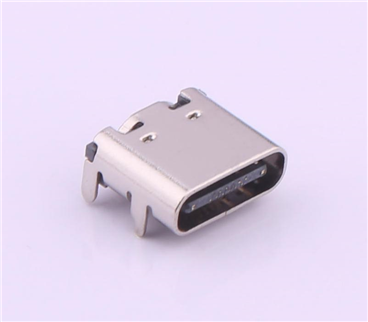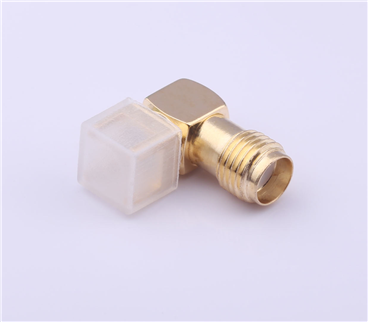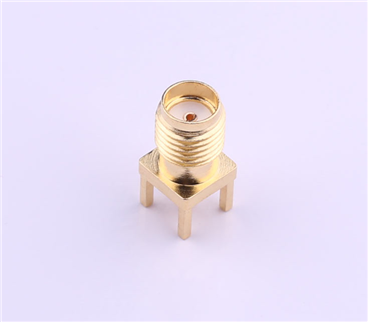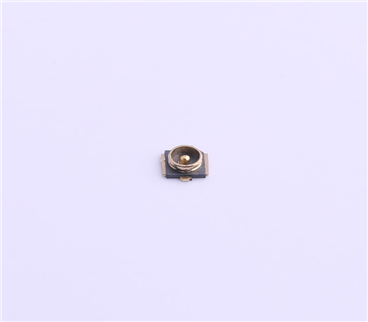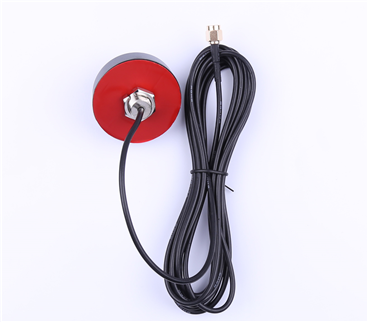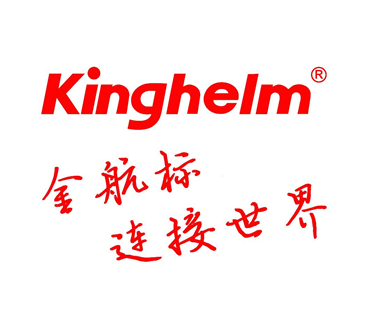Reading guide
Research on industrial transformation is a special issue jointly launched by the Institute of Internet industry of Tsinghua University and data magazine
quarterly
, this special issue aims to become a highly professional and forward-looking guidance publication on industrial transformation in China, widely discuss industrial transformation and upgrading, and promote the linkage development of theory and practice. Huang Qifan, chairman of Tsinghua industrial transformation Advisory Committee, served as the chairman of the Editorial Committee of the special issue, he Jiankun, Bai chongen, Kong Dan, Fu Chengyu, fan Daiming and Yao Zhenhua, vice chairmen of Tsinghua industrial transformation Advisory Committee, President of the Internet Industry Research Institute of Tsinghua University Zhu Yan, Professor of the school of economics and management of Tsinghua University, served as the director of the editorial board of the special issue.
The official account will continue to report articles in the special issue of industrial transformation research. The following article is published by Professor Liu Dacheng in the seventh issue of the 2020 issue of industrial transformation research. Hereby share it for readers.
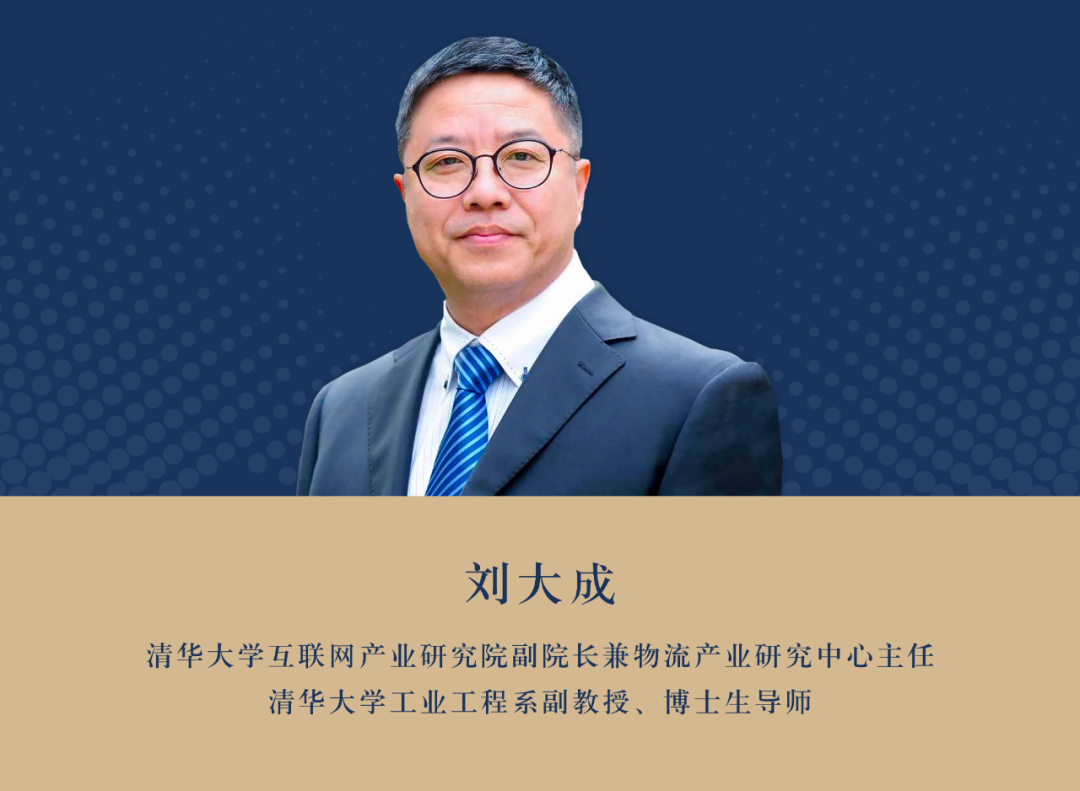
Construction of the second generation multimodal transport system dominated by railway
Wen / Liu Dacheng
Vice president of Internet Industry Research Institute of Tsinghua University, director of logistics industry research center and doctoral supervisor
“
Multimodal transport is one of the key breakthroughs in reducing cost and increasing efficiency in the logistics industry, but the first generation multimodal transport has proved difficult to implement in China. The second-generation multimodal transport and "versatile box" proposed in this paper are not only a complete system innovation, but also an innovation of equipment and vehicles, but also a standard innovation. They will increase the proportion of multimodal transport from the large system of logistics industry and fundamentally realize the cost reduction and efficiency increase of logistics industry.
”
one
Existing problems in multimodal transport
01
Container and the rise of the first generation multimodal transport
Multimodality (international multimodal transport) refers to the transportation process completed by two or more means of transportation, usually with containers as the transportation unit.
Multimodal transport is mostly related to maritime transport. In international trade, 85% - 90% of goods are completed by sea. In the maritime law of the people's Republic of China (1992), the definition of multimodal transport in Article 102 clearly stipulates that "multimodal transport operators use more than two different modes of transport, one of which is maritime transport", and determines maritime transport as an indispensable mode of transport in multimodal transport, namely sea rail transport, high seas transport, etc.
At the same time, standard containers also focus on meeting the requirements of multimodal transport with sea / water port transshipment as the core. Malcolm, the father of container & middot; McLean originally designed, produced and operated standard containers for the purpose of improving port handling efficiency in high seas intermodal transport; And its invited Johns & middot; Foster & middot of Hopkins University; The 20 foot container (TEU) found by Professor Weldon is the optimal size for port transshipment operation efficiency, and the core is sea / water transportation.
However, in fact, the highway rail intermodal transport between highway freight and railway freight, the highway air intermodal transport between highway and air freight, and the air rail intermodal transport between railway freight and air freight also meet the characteristics of multimodal transport. In particular, the "door-to-door" freight needs highway freight as the mode of transportation at both ends.
The standard container popularized for more than ten years from 1956 to 1966 has become one of the ten greatest inventions in the 20th century. The first generation multimodal transport system based on the standard container has not only led to the containerization reform of the shipping industry, but also its high-efficiency and low-cost reprint mode has directly promoted the globalization of manufacturing industry and economic globalization.
02
Existing problems of the first generation multimodal transport in China
The first generation multimodal transport represented by standard container and its transportation / transshipment system has been successfully implemented in the world for nearly 70 years, but it is far from successful in China.
In recent years, the state has issued a series of policies to promote container multimodal transport, such as the special action plan for cost reduction and efficiency increase in the logistics industry (2016-2018), the development plan for railway container multimodal transport in the 13th five year plan, and the three-year action plan to promote transport structure adjustment (2018-2020), which clearly put forward the improvement objectives of container multimodal transport, And take action. However, so far, the proportion of container multimodal transport in China is still no more than 4%, and it is still far from the nearly 40% of developed countries such as the United States, Europe and Japan.
There are many reasons for the low proportion of container multimodal transport, including the difficulty of organizational connection between industries and management institutions of different modes of transport caused by the traditional regulatory management structure, and the difficulty of unified sharing of horizontal information, data and standards; There are problems such as SOC, COC and OWC that are difficult to share the circulation turnover, as well as problems such as off-site return of containers, centralized distribution of empty containers and repair of container damage. However, the core problem is that the existing standard containers are more suitable for water transportation in China, and do not fully match the market in road freight, railway freight and air freight.
It can be seen that the international successful multimodal transport model is not fully applicable in China's logistics market. We must find a systematic innovation breakthrough suitable for China's national conditions.
two
Proposal of the second generation multimodal transport
01
Opportunities for multimodal transport reform
With the advancement of economic globalization and manufacturing globalization, China has gradually become a "world factory" because of its initial cost advantage of labor dividend, the organizational advantage of industrial clusters and the scale advantage formed by large-scale development zones; In particular, the innovative economy from informatization, networking to digitization has made the division of labor between global industrial chain ecology and supply chain more and more clear. Transnational collaborative large-scale production has become the mainstream of manufacturing industry, resulting in parts becoming the leading role of global production logistics.
20 years ago, 70% of the global trade logistics market was still complete vehicles and complete machines, but the statistical data in recent three years show that 75% of the international trade logistics and production logistics market has been standardized and modular parts. In the global business logistics and production logistics with parts as the core, nearly 60% of the longest size of parts and components goods is less than 1.2m. This change in the demand of global business logistics and production logistics will inevitably require the in-depth change of the multimodal transport system responsible for supply.
What is more revolutionary is the rapid rise of domestic express logistics. Since 2014, the express business volume exceeded that of the United States, it has always remained the first in the world. In 2019, the express business volume has completed 63.52 billion pieces, which has exceeded the sum of the markets of the United States, Europe, Japan and South Korea.
With the rapid development of the express market, there are two kinds of new equipment for logistics distribution at the end of the city. One is the express (electric) tricycle that can enter the community and park anytime and anywhere, and the other is the shared express cabinet in the community. Although the express tricycle still has many problems to be solved, its convenience and low cost make it difficult to be replaced; In particular, the longest side length of the express tricycle box of each express company is invariably limited to less than 1.2m.
02
Demand for multimodal transport reform
Despite the rapid development of express logistics, the proportion of express logistics in the logistics market is only 10%, while the bulk logistics market accounts for about 15%. The other 75% of the largest logistics market still belongs to the express market, of which the proportion of production logistics is higher.
Whether in the bulk, express or express markets, trunk logistics is relatively mature and low-cost, while the cost of branch logistics or capillary logistics of urban distribution is dozens of times higher than that of trunk logistics due to its complexity, insufficient scale and various driving restrictions of urban roads, but the efficiency is far lower than that of trunk logistics. Although express delivery, takeout service and instant delivery solve some efficiency problems in distribution, the cost remains high.
At present, trunk logistics is characterized by taking national logistics hub, regional logistics center, port or dry port and urban freight station as logistics network nodes and goods distribution. It is also the core reprint node of various multimodal transport modes and the largest storage inventory buffer node. However, it is often the low reprint efficiency and high cost of this node that restrict the cost reduction and efficiency increase of the trunk logistics industry. The weak ability of "node networking" and "re going back" and the single logistics function make the system cost of freight logistics high and the profit low, while the non standardization of containers / vehicles The low proportion of multimodal transport and belt transportation affects the efficiency of freight logistics.
There is also a need for change in bulk logistics. Coal, ore, oil, steel, grain, timber and non-ferrous metals account for more than 90% of railway freight. On the one hand, the unidirectionality caused by the "departure to arrival" mode causes the loss of railway capacity by 50%, while the "return emptying" and unreasonable incentive mechanism make the Datuan Railway Bureau company unwilling to spend costs and serve without benefits, which further leads to the loss of railway capacity by more than 70%; At the same time, the "return" bulk goods in the West and North are also difficult to use the railway capacity.
03
Proposal of the second generation multimodal transport
In 2016, the author began to study and put forward the "second generation multimodal transport" system and the core container / carrier of "hitchhiker" to replace the traditional standard container, so as to meet the general needs of the whole industry of water, rail, highway and air freight.
The goal of the second generation of multimodal transport is to build a "door-to-door" sea rail air multimodal transport system, increase the market share of multimodal transport on a large scale, and realize the reform of the whole system architecture and the optimization of resource allocation from the perspective of large-scale system.
Of course, the second generation of multimodal transport is not a reinvention of the multimodal transport system, standard containers, standard pallets and their supporting transport / transfer devices that have successfully operated for nearly 70 years, but a re innovation on the basis of retaining the original standards, requiring the functional expansion of the standards and path dependence of the original international standard container system Functional segmentation and standard innovation not only ensure the inheritance of original resources, but also ensure that the introduced system has lower cost and higher efficiency.
three Second generation multimodal transport architecture
01
Transformation from standard container to "versatile container"
The equipment core of the first generation multimodal transport is container / carrier standard container. The 13 specifications of international standard containers mentioned above are only consistent with the width standard, which is 2438 mm; There are four kinds of lengths: 1A standard is 40 feet, 1b standard is 30 feet, 1c standard is 20 feet, 1D standard is 10 feet, and the length spacing is 76 mm; There are three standards for height, 2989 mm, 2591 mm and 2438 mm respectively. The types are divided into grocery containers, open top containers, hard top containers, pallet containers, refrigerated containers, dry bulk containers, ventilated containers and canned containers.
The equipment core of the second-generation multimodal transport is "versatile container", which can also be considered as a standardized closed unit "LEGO" special combined sub container which is smaller than the standard container but meets the size modulus of the standard container and can realize "door-to-door" delivery.
Firstly, the "universal container" is also a standardized closed unit container. In order to maintain the inheritance relationship with the international general standard container, the minimum unit sub container combination with the same modulus as the 1D (10 foot) standard container can be adopted, and the open pallet can be replaced; At present, the longest side length of the express tricycle box that can directly enter the community is no more than 1.2m, and the standard tray size is also 1.2m x 1.0m and 1.2m x 1.1m. In order to ensure the "door-to-door" multimodal transport service capacity of the whole system, 2 & times can be used for different heights of the original 1D standard container; 3× 3 (maximum outside diameter 1200 mm & times; 1000 mm & times; 1200 mm) and 2 & times; 2× 3 (the maximum outer diameter is 1200 mm & times; 1000 mm & times; 1450 mm) two basically divided unit closed boxes.
Secondly, the "versatile boxes" can be freely overlapped up and down and parallel spliced in front, back, left and right, can be fixed and quickly separated from each other, can be hoisted mechanically or electromagnetically, and can be folded when empty to reduce the empty volume and emptying transportation cost; After the combination of "versatile containers" (no more than 2 & times; 3 & times; 3 or 2 & times; 2 & times; 3 mode at most), they can be loaded into the original full series of international standard containers to adapt to the original container loading / transshipment system standards, or they can be grouped by straps to reduce the weight of the original container and adapt to the original container loading / transshipment system standards independently.
Third, the "wild box" will be embedded with RFID and other IOT wireless identifiable tags and passive batteries to seamlessly access future scenarios such as intelligent logistics and contactless distribution, such as automation, fewer people and unmanned.
02
From freight station to block buffer transfer storage and distribution warehouse
Most of the container unpacking distribution or inventory buffer of the first generation multimodal transport are set up in urban freight stations, urban logistics centers or urban distribution centers. Some express enterprises often set up multiple business points for sorting and redistribution according to needs in the urban area; For the second-generation multimodal transport based on "wild box", an automatic sorting underground buffer transfer storage and distribution warehouse covering an area of about 100-200 square meters can be set up between the urban freight station and the shared express cabinet of the urban end distribution community, which is similar to the underground automatic three-dimensional warehouse, Here, the standard container or cluster box group containing "hitchhiker box" will be automatically / unmanned sorted and separated in the underground buffer transfer storage and distribution warehouse of the block, and distributed to the terminal unmanned vehicle or distribution tricycle according to the plan / scheduling. The size of "hitchhiker box" is also suitable for street transportation vehicles and transfer equipment to form a high efficiency Low cost branch distribution and terminal capillary distribution.
03
"Wild box" sharing mechanism
The cost reduction and efficiency improvement optimization approach of the logistics industry aiming at "node networking" and "going back and forth" is to reduce the ineffective operation of each link through the efficient connection of various links of logistics. Among them, the efficient sharing and recycling of "wild container", 35 ton open top container and standard container are the most core business skills and technical key to the successful operation of the second generation multimodal transport.
Mobile Internet and smart Internet of things technologies can connect freight demand and supply resources in real time and accurately. The "universal container", 35 ton open top container and standard container based on mobile Internet of things and smart Internet of things can not only share the transportation / transshipment equipment and multimodal transport standard system, but also through the scientific layout of container return points, empty container folding and empty container centralized distribution, Through time-sharing leasing, the third party can "share" the versatile container open top container standard container platform, reduce the conflict of technical standards such as container suitable goods in various industries and the correction of unbalanced load in the container, overcome the insurmountable weaknesses of the first generation multimodal transport, such as overdue costs and poor turnover, and reduce the information island between departments, Truly realize "one-time entrustment", "one order to the end" and "one-time settlement", realize the open sharing of information based on "double-blind" logistics, and increase the proportion of "door-to-door" multimodal transport between sea, rail and air to more than 50%.
four
Second generation multimodal transport operation mode dominated by railway
01
The need of industrial structure adjustment and railway leading
Covid-19 epidemic has accelerated the trend of "anti globalization", coupled with various elements of geopolitics, making China face major changes in the global supply chain ecology.
In the past, China's southeast coast mainly assumed the responsibility of "world factory" in the global industrial chain, and logistics was more outward and eastward. In the southeast coastal areas, the cost accounting should focus on sea transportation and road transportation, and the proportion of railway freight market is decreasing; However, with the rise of labor costs and industrial upgrading in the southeast coastal areas, the rise of manufacturing industry in central and southwest urban agglomerations such as Chongqing, Chengdu, Wuhan, Zhengzhou and Changsha, and the global industrial chain ecology that may be changed by the epidemic, logistics may turn inward and westward in the future. Considering the cost accounting of southeast coastal ports, railway freight has comparative advantages. From "railway infrastructure" to "new infrastructure", the main body of national investment has focused on the construction of railway network. According to the medium and long-term railway planning, the railway investment in the 13th five year plan alone will reach 3.8 trillion yuan, and the railway network will cover every county by 2030; At the same time, in the transportation structure adjustment with "public to rail" and "public to water" as the core, railway freight will further develop under the policy dividend and market pull, railway sea / water intermodal transport and highway railway intermodal transport will also be further promoted, and the proportion of railway freight will be greatly improved. However, the railway freight structure will also face changes. The UHV in the "new infrastructure" is to use the "pithead power generation" and coal power integration to form the UHV power transmission and transformation into the sixth logistics mode after pipeline transportation. The "west to East Coal Transportation" and "north to South Coal Transportation" will face corresponding changes.
In order to realize the "node networking" and "re-entry and re-entry" of railway bulk freight, it is necessary to release the online resource constraints of railway network, that is, reduce one-way logistics equipment such as automatic loader and automatic dumper in a certain proportion, and correspondingly change the railway freight yard at the shipping end from online resources to offline resources; At the same time, by introducing the 35 ton open top box to realize the "bulk to centralized" of coal, it is possible to configure large cargo sources such as ore, grain and timber on the return trip for two-way shipment, so as to double the railway capacity in the form of "heavy removal and return".
At the same time, the southeast coastal areas produce the world's most high-quality and cheap "made in China" goods, but the northwest is often unable to enjoy them because of the high logistics cost in the past. Once the railway heavy haul line connects the standard container with the open top container through "scattered to centralized", it will also form an integrated network of bulk logistics and white goods logistics, which will bring greater profit space to the railway freight transportation and connect the railway sea intermodal transport. The railway led multimodal transport reform has become inevitable.
02
Value added services of the second generation multimodal transport
With "versatile box"
-
Open top container
-
The second generation multimodal transport based on standard container and dominated by railway freight also has the ability of information service and financial service because of its whole process visual, manageable, controllable and traceable ability.
Multimodal transport itself requires the service organization mode of "one-time entrustment" in the whole process, the "one-time collection" of waybills and the "one-time collection" of settlement, while the "versatile box" will extend the service link to the closest logistics end. In addition, the railway freight network and its derivative docking road freight "pick-up and delivery" service make the whole process of goods controlled, The integrated value-added services derived from the independent functions of logistics and supply chain management will effectively improve the system service profit and income.
With the popularization and development of 5g, edge technology and mobile Internet, intelligent IOT aiot of artificial intelligence and Internet of things has become the mainstream technology of intelligent monitoring in the future. In particular, the cost of multi-channel video real-time monitoring for the storage of pledged goods such as bulk goods and miscellaneous goods is getting lower and lower, and the measurement accuracy is getting higher and higher, making it easy to ensure the real quality of pledged goods.
Big data and cloud computing are easier to form a closed loop of the upstream and downstream supply chain of financing enterprises with collateral as the link medium. The alliance blockchain based on the supply chain and integration can ensure the uniqueness and unity of the collateral, and ensure that the property right relationship between the collateral, the pledgor and the pledgee is clear.
The development of aiot and blockchain technology will also naturally transition paper warehouse receipts that are difficult to standardize, easy to forge, difficult to verify and inefficient to electronic warehouse receipts. Digital technology will naturally standardize the functions of warehouse receipts, such as standardization, digital encryption, real-time verification, whole process deposit and online audit, so as to achieve lower cost, stronger credit risk control Faster circulation efficiency and more convenient control over pledged property; In particular, effectively control the financing leverage and scientifically obtain the risk premium, comprehensively improve the credit ability of financiers (pledgers) and custodians by using the credit investigation platform based on effective monitoring quality, and help small and micro enterprises in the chain solve the dilemma of difficult and expensive financing.
The second generation of multimodal transport constructed from "hitchhiker" - open top container - standard container will fundamentally increase the proportion of domestic multimodal transport, and realize the efficiency improvement and cost reduction of urban terminal distribution by extending the urban freight station as distribution to the underground buffer transfer storage and distribution warehouse in the block; Increase the proportion of bulk logistics multimodal transport through "hitchhiker" - open top container - standard container. Of course, there are still many details to be explored for the second-generation multimodal transport of containers / vehicles based on the "versatile box", but this research direction can effectively improve the cost reduction and efficiency of the large system of the logistics industry.

